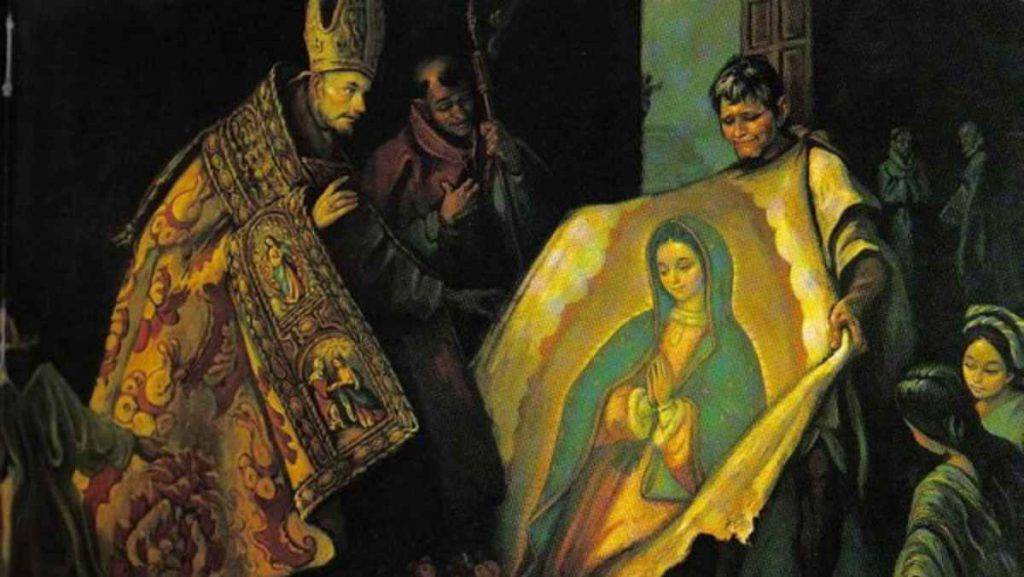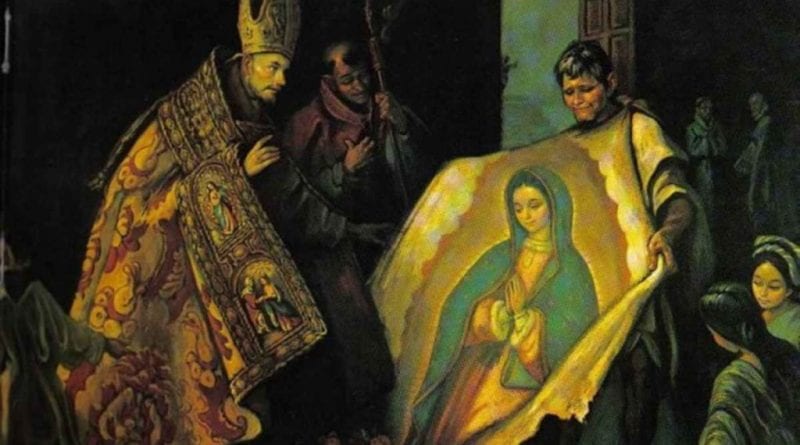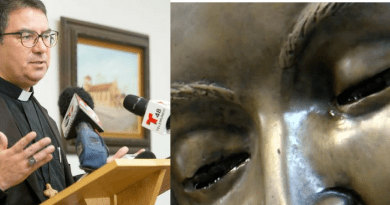“The Impossible Miracle” Virgin of Guadalupe: the uncorrupted mantle continues to challenge science…Today is the Feast day for Our Lady of Guadalupe
Devotion to the Virgin of Guadalupe among its origins several centuries ago. Scientific studies have shown its extraordinary nature.

In 1531 the Madonna appeared to Juan Diego Cuauhtlatoatzin, one of the first Aztec converts to Christianity.
Mantle of Guadalupe: an unpainted image
The studies carried out on the mantle of Guadalupe have led to quite exceptional results . Many scientists and experts in the photographic sector have studied the mantle depicting the Virgin closely. What could be seen thanks to their work is that the image was literally imprinted in the mantle, all at the same time and its coloring does not present any sign of animal or mineral elements. Furthermore, even if the coat has a rough surface, the image is completely smooth.
The impossibility of replication
On the basis of what the studies have brought to light, scientists maintain that it has never been possible to replicate any image that presents the same characteristics as the mantle of the Santo Juan Diego , above all due to the fact that the emblematic image is on the mantle from about five hundred years and has not faded, despite the fabric being of poor quality.
Our Lady of Guadalupe
During the 16th century a chapel was erected in memory of the apparition of the Virgin of Guadalupe to Juan Diego, an Aztec peasant. He was among the first to have converted to Christianity. The chapel, founded in 1557 and later consecrated as a sanctuary in 1622, is the emblem of Marian devotion born after the apparition. It was Maria herself who dictated the name Guadalupe directly to Juan Diego; some historians have hypothesized that this name was the transcription in Spanish of the expression “she who crushes the snake”.
The scholar Adolfo Orozco and the Virgin’s mantle
The studies conducted by the researcher Adolfo Orozco (National Autonomous University of Mexico), have led to note that no tissue similar to that of the coat of Guadalupe, can last more than 8-10 years, if placed in humid environments. The climate in the basilica reflects this characteristic. Orozco’s study starts from a 1789 painting , a faithful copy of the image of Guadalupe. This painting was made with the best techniques of the time and, above all, with a fabric very similar to the original cloak. This painting was immediately covered and protected by a glass.
The original coat has been on display for 116 years
However, the 1789 painting had to be put away, as the colors were fading and the fibers were gradually flaking. The original mantle of the Madonna replaced this painting. The coat has been exposed for about 116 years and continuously receives ultraviolet rays from the candles of devotion. Yet, the original mantle does not present any failure and presents itself in an extraordinary state of preservation.
Unexplained events for science
Throughout history, the mantle of Guadalupe has been the protagonist of two exceptional and miraculous events. The first of these dates back to the 18th century. It was 1791 when, incidentally, a liquid containing nitric acid fell to the right side of the mantle tissue. The Orozco scholar (among the speakers of the first International Marian Congress on Our Lady of Guadalupe ) argued that the fabric received no damage from the fall. As it happened for the Holy Shroud and the Holy Face of Jesus , science has carried out numerous analyzes on the miraculous mantle, defining these events inexplicable.
The Miracle of 1921
The second miraculous event happened in 1921, when Luciano Perez , a bomber sent by the government, hid a bomb in the middle of flowers at the foot of the altar. The explosion caused serious damage to the basilica, but the cape of the Virgin and the glass that protected it remained miraculously intact. The scholar declared these events “beyond all sorts of scientific explanations”.
Fabio Amicosante







